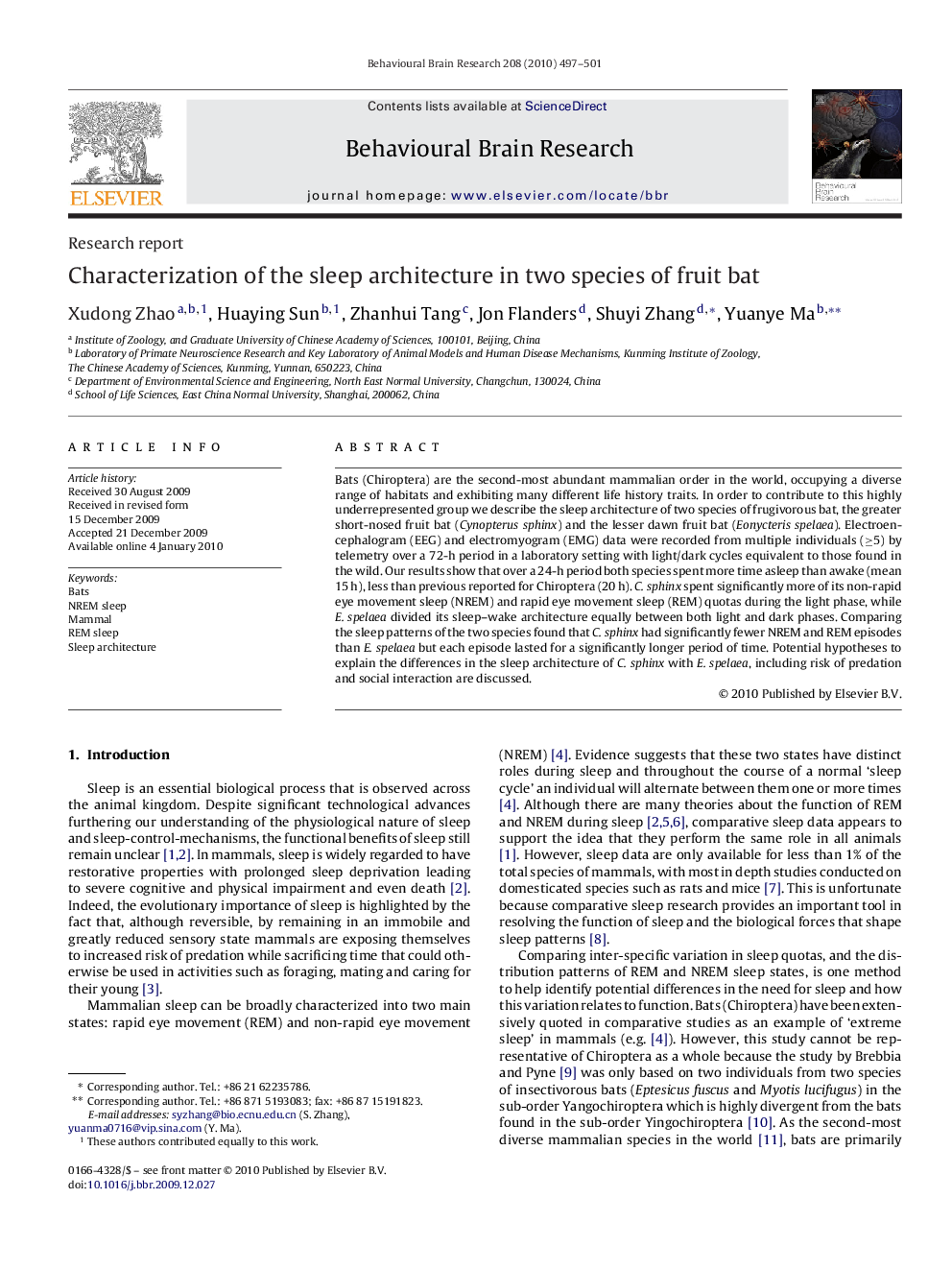| Article ID | Journal | Published Year | Pages | File Type |
|---|---|---|---|---|
| 4314373 | Behavioural Brain Research | 2010 | 5 Pages |
Bats (Chiroptera) are the second-most abundant mammalian order in the world, occupying a diverse range of habitats and exhibiting many different life history traits. In order to contribute to this highly underrepresented group we describe the sleep architecture of two species of frugivorous bat, the greater short-nosed fruit bat (Cynopterus sphinx) and the lesser dawn fruit bat (Eonycteris spelaea). Electroencephalogram (EEG) and electromyogram (EMG) data were recorded from multiple individuals (≥5) by telemetry over a 72-h period in a laboratory setting with light/dark cycles equivalent to those found in the wild. Our results show that over a 24-h period both species spent more time asleep than awake (mean 15 h), less than previous reported for Chiroptera (20 h). C. sphinx spent significantly more of its non-rapid eye movement sleep (NREM) and rapid eye movement sleep (REM) quotas during the light phase, while E. spelaea divided its sleep–wake architecture equally between both light and dark phases. Comparing the sleep patterns of the two species found that C. sphinx had significantly fewer NREM and REM episodes than E. spelaea but each episode lasted for a significantly longer period of time. Potential hypotheses to explain the differences in the sleep architecture of C. sphinx with E. spelaea, including risk of predation and social interaction are discussed.
